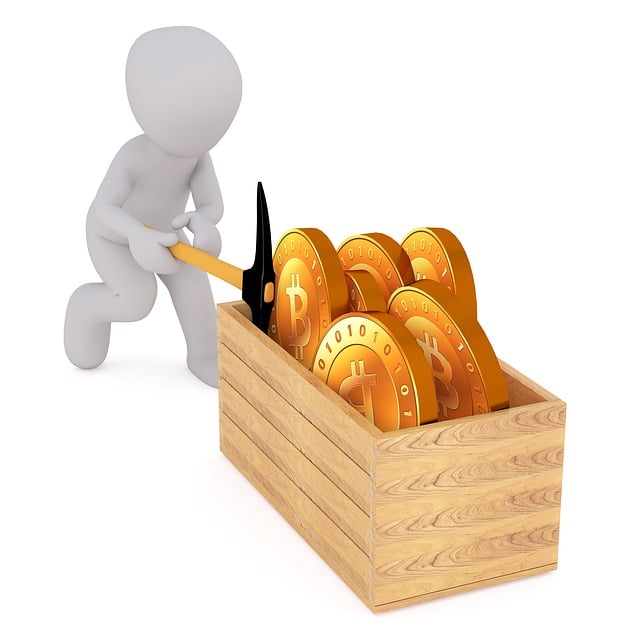Since 2009 when Bitcoin was just introduced, the cryptocurrency industry has continuously gained traction in the financial world. Here we discuss how to start yield farming.
There has been a major influx of people and businesses into the industry. Crypto has even been adopted by some countries with El Salvador going as far as declaring Bitcoin to be a legal tender.
The beauty of the crypto industry is there are always new trends. Trends such as NFTs(Non-Fungible Tokens) and DeFi(Decentralized Finance) ensure the crypto industry is ever relevant.
With the rate at which crypto is being invested in and adopted all over the world, the full migration of physical assets to digital assets is a matter of when.
But let’s talk about Yield Farming and Staking.
What is Yield Farming and Staking?

It took the world by storm in 2020 and has continued to be a profitable trend-especially for individuals who are well versed in it. In layman’s terms, Yield Farming is the process of locking or staking the cryptocurrency you have purchased in a liquidity pool with the sole aim of earning interest which could be fixed or variable. The liquidity pool is where lenders come to lend assets in the crypto market.
Let’s take a look at an everyday scenario. When you take a loan from a bank, you pay the bank back the money with interest within a specific timeline. The same thing applies to Yield Farming. Digital assets which would normally be idle in a wallet are lent out via DeFi apps to earn rewards.
How does Yield Farming Work?

First, you will need to lock your assets in a liquidity pool which are regarded as smart contracts that contain digital assets. The assets that yield farmers’ deposits are usually stable coins such as USDT, USDC, and DAI.
Stable coins are coins that have their values pegged to a fiat currency such as the USD. However, the assets you may deposit are not limited to stable coins. You can also deposit Ethereum or tokens on the Ethereum blockchain.
The liquidity pool is where the parties involved can borrow, lend, or exchange digital assets. From this, a liquidity provider/Yield Farmer is the party that locks assets in a liquidity pool for lenders to access.
Because Yield Farming is built on the Ethereum Blockchain, people often confuse investing in Ethereum with Yield Farming. Investing in Ethereum isn’t the same as Yield Farming. You’re considered a Yield Farmer only if you lend out your assets on the decentralized protocols.
The beauty about Yield Farming is that the rewards earned on your mature assets can also be deposited in liquidity pools. So, you can either treat yourself with your rewards or chase more profit.
It should be noted that the rules of the protocol you’re locking your funds in determine the returns you get. However, your returns are largely dependent on the number of assets you lock up.
The biggest gainers of Yield Farming are people that deposit more assets. The more the value of assets you deposit in the liquidity pool, the more your returns.
Which DeFi Protocols should I look into?

There are a series of solid DeFi protocols that you can explore if you’re looking to get into yield farming.
My top pick is Aave – a liquidity protocol for borrowing and lending digital assets. The platform allows users to lock up stable coins and other cryptocurrencies in the liquidity pool. Aave rewards lenders with “aTokens” as an additional reward to the interest they’d normally earn. You earn more aTokens as the period of lending your asset grows.
Another project is Uniswap. Uniswap was one of the pioneers of DeFi farming and staking. Uniswap supports integration with other DeFi platforms such as Aave and Compound.
Other notable mentions include Compound, Maker, Sushiswap, and Balancer. All these protocols offer high rewards and I use them to farm and stake my assets.
You can further explore other Crypto launchpads for tools to help you create your own tokens and launchpads in a fast, simple and cheap way, which are 100% decentralized.
Is Yield Farming Safe & Profitable?

While there’s certainly no doubt about the profitability of yield farming or staking, questions have been raised over the risks associated and the financial stability.
It should be noted that cryptocurrencies excluding stable coins are volatile investments. DeFi farming is complex and only experienced farmers who are familiar with the Ethereum Blockchain make the highest returns from it.
There are several risks associated with farming and staking including:
1. Market Volatility
It is not uncommon for the crypto market to experience price surges within very short timeframes. However, so is the case when the price falls. The price of your assets could fall while they are staked in the liquidity pool leading to loss.
2. Smart Contract Risks
As mentioned earlier, smart contracts contain the assets. A smart contract could be hacked or riddled with bugs which makes it easy for attackers to compromise its security. This puts you at risk of losing your assets.
3. Rug Pulls and Fraud
A rug pull is a scenario where a crypto developer crashes the project by removing liquidity from such an asset. Rug pulls and frauds are quite frequent in the crypto space, so you want to be careful with the investments you choose.
Conclusion
No one can ascertain how long yield farming will remain relevant to the crypto space. However, it is well-positioned to succeed as more people in the crypto space are getting into it. The fact that it is less risky than day trading also puts yield farming in a great position.
This article is purely for informational purposes. Ensure you do further research and have a deep understanding of the crypto space before you invest in the cryptocurrency market. It is important you know how to navigate the crypto space so you can maximize your returns.
I wish you the best returns.
Author Bio

Abdulateef Olatunji is a creative writer and storyteller. Originally majoring in Computer Science, his love for words led him to freelance writing – including his own eBook guide to Affiliate Marketing. When he’s not putting pen to paper or fantasizing about going to space, he spends his free time hosting a football podcast and watching movies

